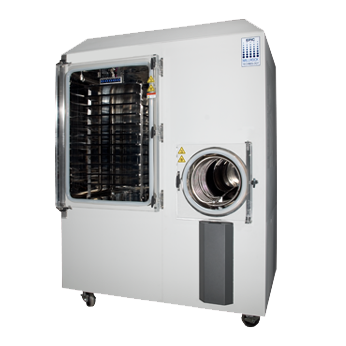Home· · ·Techcomp college· · ·Maintenance Center
Maintenance Center
How to Choose a Lyophilizer
How to Choose a Lyophilizer
Finding the Best Freeze Dryer for
Your Needs
With so many options available it’s no wonder the task of choosing a lyophilizer can be confusing. Rightfully so, there are a number of things to consider.
Types of Lyophilizers
The common notion that ‘all freeze dryers are the same’ is false. In fact freeze dyers should always be customized to your specific needs. These needs generally fall into the following basic categories:
Laboratory Freeze Dryers vs. Production Freeze Dryers
Laboratory freeze dryers are used for a large variety of applications which range from simple removal of solvent from a material to Phase 1 clinical trials to protocol development for scale-up production. Typically, laboratory freeze dryers have a shelf area of 0.1 sq. meters up to 1 sq. meter.
On the other hand, Production Freeze Dryers are used for Phase 2 and Phase 3 clinical trials and tend to be used for the same or a limited number of products in high volume productions. Unlike the generally small laboratory freeze dryer shelf area, production freeze dryers typically offer a shelf area from 1 sq. meter up to and over 40 sq. meters.
Non-Sterile vs. Sterilizable Freeze Dryers
Depending on a lyophilizer’s intended use, sterilization between freeze drying cycles may be a necessity. In particular, pharmaceutical applications typically require sterilization between each cycle of the freeze drying process. A common method for sterilization is pressurized steam, which requires the freeze dryer chambers to be certified pressure vessels rated to 2 atmospheres at 131oC. Another sterilization method is to use hydrogen peroxide. Pressurized steam sterilization can add significant complications and cost to a freeze dryer. On the other hand, the hydrogen peroxide method, typically keeps cost down.
Lyophilizer Options & Features
Once you have determined the type of freeze dryer that fits your needs there are additional options and features to consider. These features include:
· Shelf Size
· Shelf Style: bulk vs. stoppering
· Condenser Location: internal vs. external
· Material: 304 vs. 316SS
Shelf Size
Depending on your needs, shelf size can vary dramatically from 0.1 sq. meters to 40 sq. meters and beyond. How much shelf space need is entirely dependent on each freeze dryers specific needs. Our freeze drying capacity calculator will lead you in the right direction.
Shelf Style: Bulk vs. Stoppering
Bulk style shelves are fixed in place. Bulk applications include but are not limited to: API’s, Diagnostics, Tissue, Surgical kits, etc… Stoppering units have movable shelves. Stoppering configurations can be modified to accommodate additional shelf inter-distance. Stoppering shelves are most commonly used for the compression of stoppers into vials under vacuum conditions. Additionally, stoppering shelves can also be used for aiding in CIP cycles.
Condenser Location: Internal vs. External
Internal condensers are less expensive and provide unrestricted vapor flow. An external condenser is supplied with an isolation valve to separate the product from the condenser. This protects the product from reconstitution during power loss and keeps the condensate out of the clean room environment.
Material: 304 vs. 316SS
316L is typically used on pharmaceutical and biotech applications while 304L is mostly used on food grade and industrial applications.
More Questions?
For more information, do not hesitate to contact us, request a quote, send an email to techcomp@techcomp.com.hk, or give us a ring at +852 2751 9488. Our staff is ready and available to answer your questions and get you on the road to the perfect freeze dryer for your specific needs.

Product info: Millrock Freeze Dryer
Source: Millrock Technology, Inc.



 2606, 26/F., Tower 1, Ever Gain Plaza, 88 Container Port Road, Kwai Chung, N.T., Hong Kong
2606, 26/F., Tower 1, Ever Gain Plaza, 88 Container Port Road, Kwai Chung, N.T., Hong Kong +852-27519488 / WhatsApp/WeChat HK: +852-8491 7250
+852-27519488 / WhatsApp/WeChat HK: +852-8491 7250 techcomp@techcomp.com.hk
techcomp@techcomp.com.hk
 Sweep The Concern Us
Sweep The Concern Us